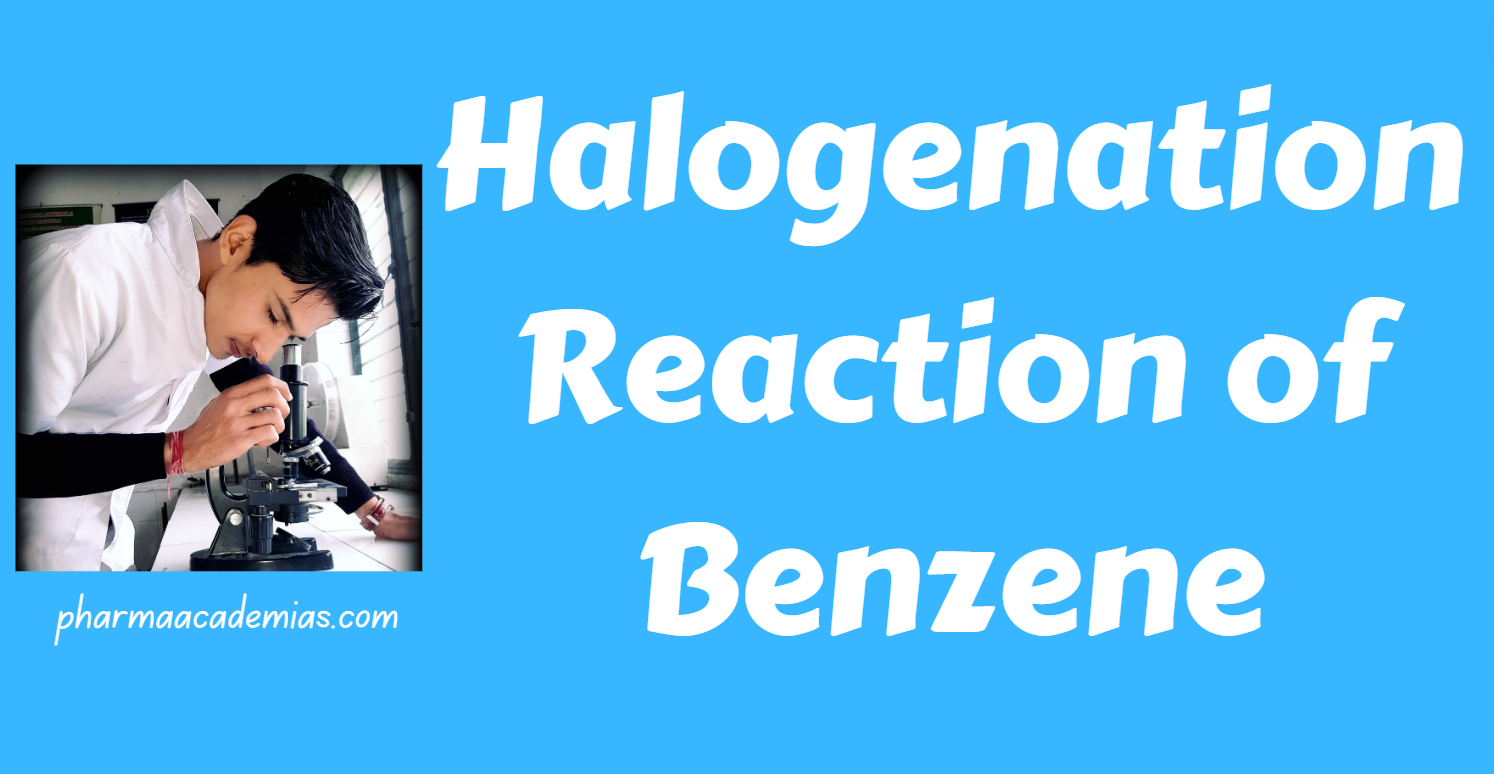Halogenation is a type of electrophilic aromatic substitution reaction where a halogen atom replaces a hydrogen atom in a benzene ring. This reaction is significant in organic synthesis and is a key example of the reactivity of benzene and its derivatives. Here’s a detailed note on the halogenation reaction of benzene:
Halogenation Reaction of Benzene
1. Reagents
Halogen reagents used in the halogenation of benzene include chlorine (Cl2) or bromine (Br2).
A Lewis acid catalyst, such as iron (Fe) or aluminum chloride (AlCl3), is often employed to increase the reaction’s efficiency.
2. Reaction Mechanism
The halogenation of benzene proceeds through the following steps:
Formation of Electrophile:
Cl2Cl++Cl−
Generation of Benzene Cation:
C6H6+Cl+ → C6H5Cl+H+
Loss of a Proton and Regeneration of Electrophile:
C6H5Cl+H+ → C6H5++HCl
Attack of Electrophile on Benzene Ring:
C6H5++Cl− → C6H5Cl
3. Regioselectivity
Benzene is regioselective in halogenation, meaning that the halogen predominantly substitutes at one specific position.
The halogen attacks the benzene ring at the ortho and para positions, with para being the major product.
The attack at the meta position is highly unfavorable due to steric hindrance.
4. Isomer Formation
Due to the high symmetry of benzene, all hydrogen atoms are equivalent. Therefore, halogenation of benzene produces only one product – chlorobenzene or bromobenzene.
There are no positional isomers in the product.
5. Reaction Outcome
The overall balanced chemical equation for the halogenation of benzene with chlorine is:
C6H6+Cl2 → C6H5Cl+HCl
Similarly, bromination can be represented with (Br2) instead of (Cl2).
Significance
– Halogenation provides a method to introduce halogen atoms into benzene, creating halobenzene derivatives.
– The resulting halobenzene compounds are essential intermediates in synthesizing various organic chemicals, including pharmaceuticals and agrochemicals.
– The regioselectivity of the reaction is crucial for controlling the position of the halogen substitution on the benzene ring.
– Halogenation is a representative example of electrophilic aromatic substitution, a class of reactions commonly exhibited by benzene and its derivatives.

